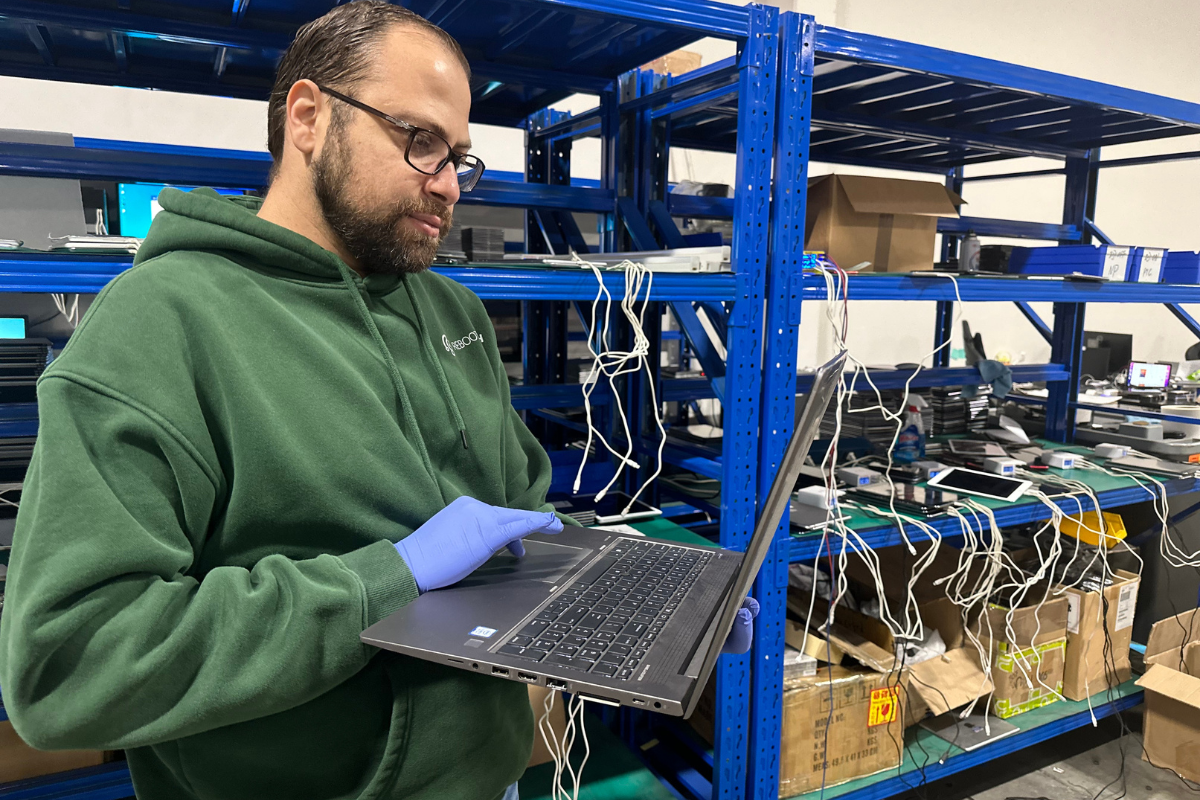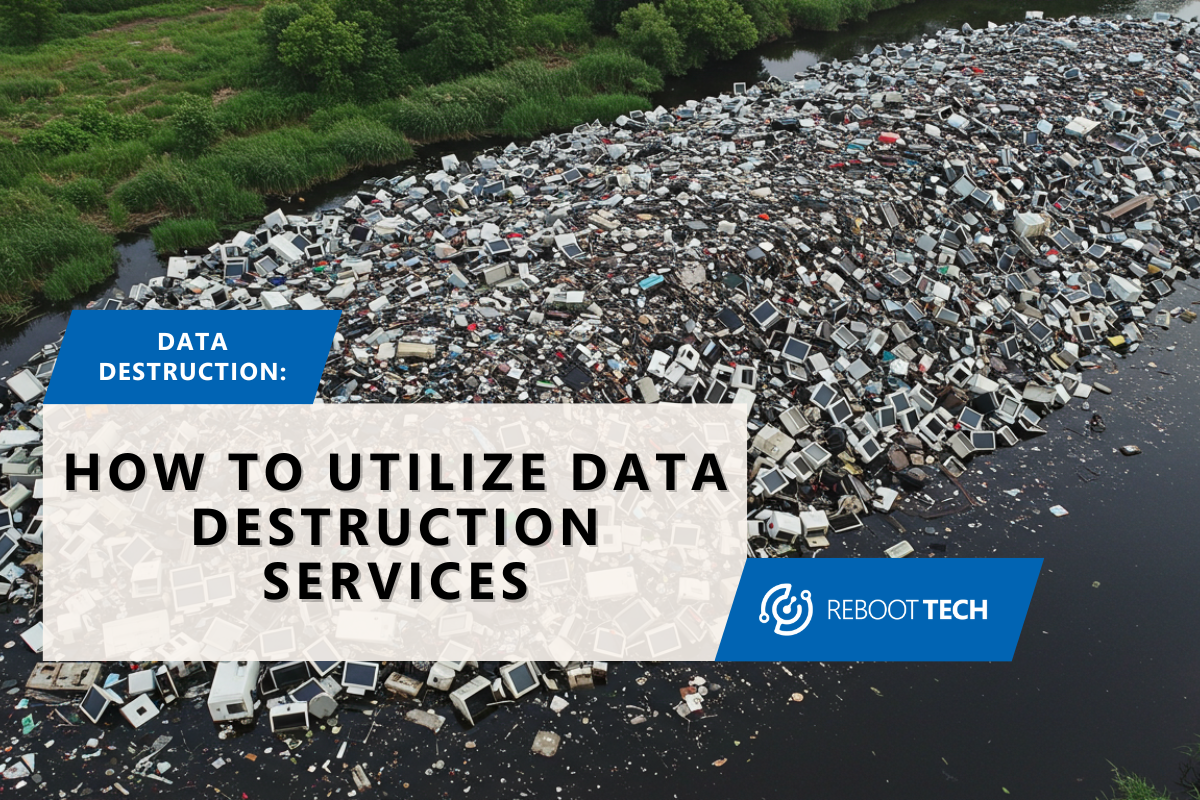
Why ITAD and E-Waste Recycling Matter
In today’s fast-paced business world, technology is constantly evolving. Companies upgrade their IT equipment regularly, but what happens to the old devices? Many businesses overlook the potential value of their outdated technology. Instead of letting old computers, servers, and other electronic equipment collect dust or end up in landfills, businesses can tap into the financial benefits of IT asset disposition (ITAD) and e-waste recycling.
ITAD and e-waste recycling aren’t just about doing the right thing for the environment; they’re also smart financial strategies. These practices can help businesses recover value from old assets, reduce costs, and ensure data security.
In this article, we’ll explore what ITAD is, how it can maximize returns for your business, and why working with a certified ITAD provider like Reboot Tech is essential. We’ll also break down three main ways ITAD can save your business money and offer tips for implementing a successful ITAD program.
What Is IT Asset Disposition?
IT asset disposition (ITAD) refers to the process of managing and disposing of outdated or unwanted IT equipment in a secure, environmentally friendly, and cost-effective way. This includes everything from wiping data from old devices to recycling or reselling hardware.
When businesses upgrade their technology, they often replace a large number of devices, including computers, servers, smartphones, and more. ITAD ensures that these devices are handled properly, reducing the risk of data breaches and ensuring compliance with environmental regulations.

ITAD is about more than just disposal; it’s about making the most out of your old technology. By partnering with a certified ITAD provider, businesses can unlock the hidden value in their old equipment, whether through resale, recycling, or repurposing.
Maximizing Returns on ITAD
One of the key benefits of ITAD is the ability to maximize returns on old IT assets. Instead of simply throwing away outdated equipment, businesses can recover value through several channels. These include:
- Resale: Many older devices still have value in secondary markets. A certified ITAD provider can help you refurbish and resell these devices, turning what might seem like junk into revenue.
- Recycling: When devices are no longer usable, recycling allows businesses to recover valuable materials like metals and plastics. These materials can be sold to manufacturers, contributing to a circular economy and generating income.
- Donations and Tax Benefits: Donating old IT equipment to schools or non-profits can provide significant tax benefits, further enhancing the financial return on outdated assets.
By leveraging these opportunities, businesses can turn what might seem like a costly disposal process into a profitable one.
Three Ways ITAD Saves Money and Improves Efficiency
Now that we’ve covered how ITAD can generate revenue, let’s look at three key ways it can also save your business money and improve operational efficiency.
1. Reducing Storage and Maintenance Costs
Old IT equipment that’s no longer in use often takes up valuable space in offices or storage facilities. Storing outdated devices not only clutters your workspace but also incurs storage costs. Over time, these costs add up, especially when you consider the potential need for additional space.
By implementing a regular ITAD process, businesses can free up space and eliminate the costs associated with storing obsolete equipment. Additionally, maintaining old equipment, even if it’s not in active use, can be costly. Regular ITAD practices help reduce these hidden costs, making your business more efficient and saving money in the long run.
2. Ensuring Compliance and Avoiding Fines
Compliance with environmental and data protection regulations is crucial for any business. Improper disposal of e-waste or failure to securely wipe data from old devices can lead to hefty fines and legal issues. Regulations like the General Data Protection Regulation (GDPR) and the California Consumer Privacy Act (CCPA) impose strict requirements on data handling and disposal.

Working with a certified ITAD provider ensures that your business is compliant with all relevant laws and regulations. This not only protects you from potential fines but also enhances your reputation as a responsible business. Avoiding compliance issues can result in significant cost savings, as legal fees and fines can quickly become expensive.
3. Enhancing Data Security and Preventing Breaches
Data breaches are a significant concern for businesses of all sizes. Old IT equipment often contains sensitive data that, if not properly destroyed, can be accessed by unauthorized parties. The cost of a data breach can be astronomical, not only in terms of fines but also in terms of lost business and damage to your company’s reputation.
A key component of ITAD is secure data destruction. A certified ITAD provider will ensure that all data is completely wiped or destroyed from your old devices, eliminating the risk of a data breach. By preventing potential breaches, businesses can avoid the high costs associated with data recovery, legal fees, and loss of customer trust.
Best Practices for Implementing ITAD
You might wonder how to implement an IT Asset Disposition strategy. To fully reap the financial benefits of ITAD and e-waste recycling, it’s important to implement best practices and work with a certified ITAD provider. Here are some tips for a successful ITAD program:
1. Work with a Certified ITAD Provider
Partnering with a certified ITAD provider like Reboot Tech ensures that your e-waste is handled in compliance with all regulations. Certified providers follow industry best practices for data destruction, recycling, and resale, giving you peace of mind and maximizing your returns.
2. Regularly Audit Your IT Assets
Keep track of your IT assets and schedule regular audits to identify outdated equipment. This will help you stay on top of your ITAD process and ensure that you’re not holding on to obsolete devices that could be costing you money.

3. Prioritize Data Security
Make data security a top priority in your ITAD process. Ensure that all data is securely wiped or destroyed before disposing of any devices. This will protect your business from data breaches and the associated costs.
4. Plan for Future Upgrades
Integrate ITAD into your overall IT strategy. When planning for future technology upgrades, consider how you will dispose of old equipment. By planning ahead, you can ensure a smooth transition and avoid unnecessary costs.
Reaping the Financial Rewards of ITAD
IT asset disposition and e-waste recycling are more than just responsible practices—they’re smart financial strategies for your business. By implementing a well-planned ITAD program and working with a certified provider like Reboot Tech, you can maximize returns on your old equipment, reduce costs, and protect your business from compliance and data security risks.

In a world where technology is constantly evolving, staying on top of your IT assets and ensuring they are disposed of properly is crucial. Not only will you be doing your part for the environment, but you’ll also be making financially sound decisions that benefit your bottom line.
Take control of your e-waste and IT assets today, and start enjoying the financial benefits that ITAD has to offer.





